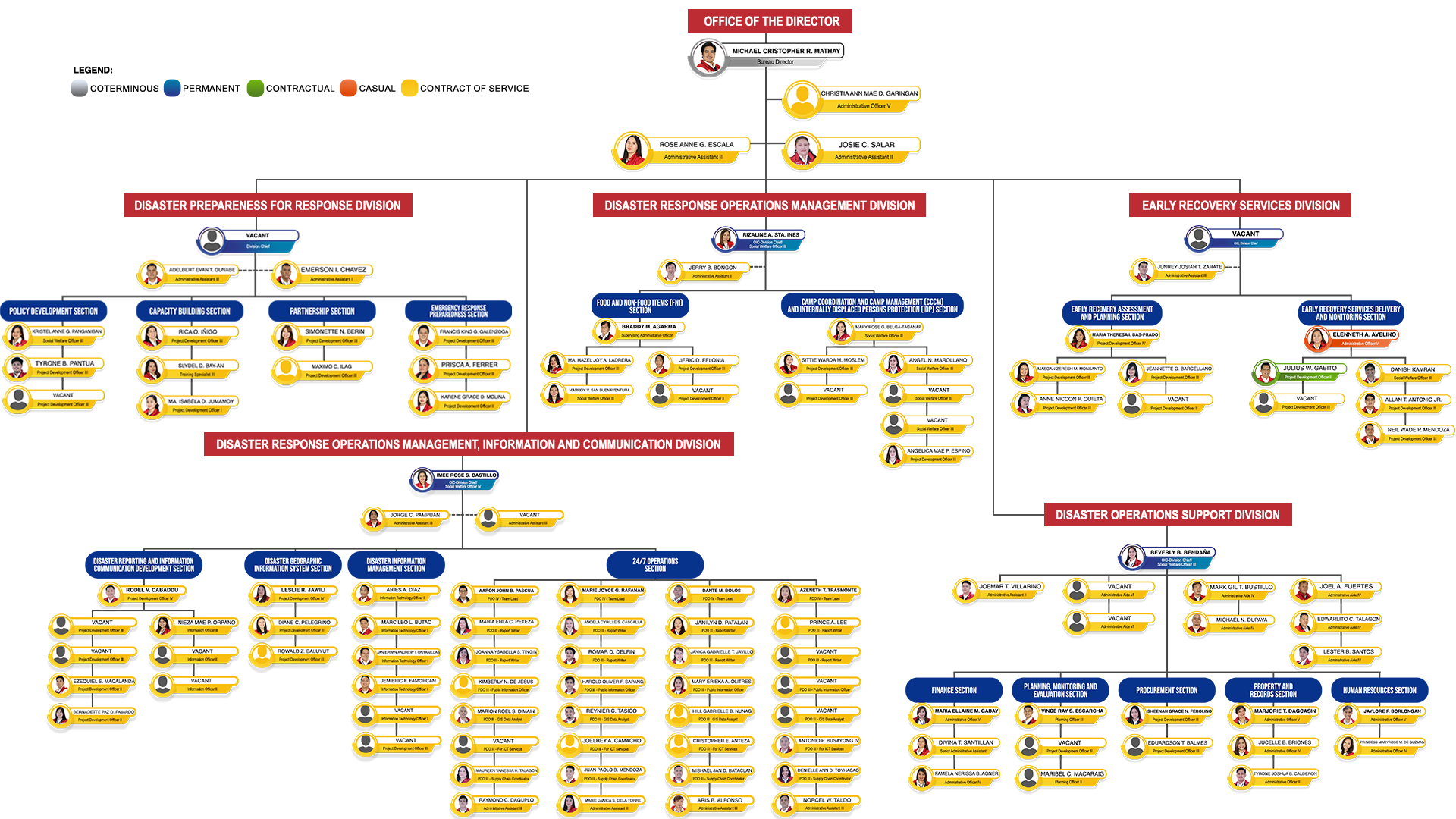- Mission and Vision
- History
- Organigram
The Disaster Response Management Bureau is mandated to provide technical assistance and resource augmentation to the DSWD-Field Offices (FOs) and stakeholders in the management of disaster risk reduction and management (DRRM) policies, plans and programs for disaster-affected families and communities in the context of social protection. Its functions give emphasis on the delivery of a coordinated disaster response in times of disasters and emergencies.
As Vice Chair for Response and Early Recovery Pillar of the National Disaster Risk Reduction and Management Council (NDRRMC), DSWD is mandated to ensure that the response of the Philippine Government as a whole to disasters is well-coordinated, follows established protocols, and is clearly communicated to the public. The Department also performs as the cluster leads of the Camp Coordination and Camp Management (CCCM), Internally Displaced Person (IDP) Protection, and Food and Non-Food items (NFIs).
2028 Vision Basecamp: A desired whole-of-nation approach in disaster preparedness for response, reducing risks and enhancing the resiliency of Filipino families and communities on disasters and climate change towards sustainable development




